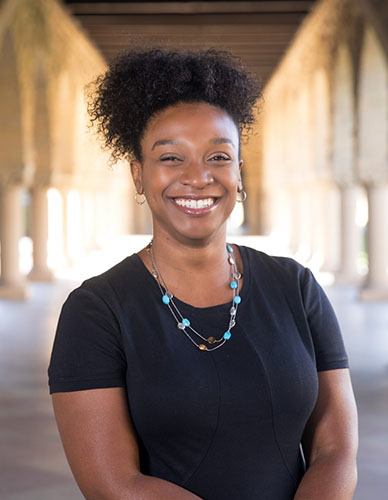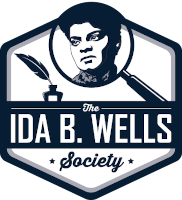Akilah Johnson is a health policy reporter for ProPublica who co-presented (with Kat Stafford, national race and ethnicity reporter at the Associated Press) a virtual workshop on covering COVID-19 and race for the society’s recent workshop series.

Previous to ProPublica, Johnson was a reporter for The Boston Globe and the South Florida Sun-Sentinel. She shared a Pulitzer Prize for coverage of the 2013 Boston Marathon bombing and was Pulitzer finalist as a member of the Globe’s Spotlight Team investigation into racism in Boston.
You have been reporting on race and COVID since the beginning of the pandemic. What were those early conversations like at ProPublica?
Early on, we had a staff meeting at ProPublica where we decided that we wanted to look at the racial disparities as it pertained to COVID. We understood African Americans, in particular, suffer from higher rates of chronic diseases that put them at severe risk if they caught the virus. We were very intentional about not wanting to racialize the pandemic. It was not good enough to do a story that says African Americans have higher rates of diabetes or hypertension that put them at higher risk. Surface-level analysis was not going to do it. We had to probe and go deeper – how do we connect the dots, what can be done to turn this trend around, and importantly, how did we get here?
What was your reporting process like?
We needed data, and there wasn’t a lot of it in the beginning. We could not write about this from assumptions. You have to have real evidence to support those kinds of statements. Not a lot of people were tracking it, so this is why we focused, initially, on Milwaukee. At the time, Milwaukee had 10 deaths from COVID, and they were all African Americans. We wanted to wrap our minds around the death toll, so we had a team making Freedom of Information Act (FOIA) requests so we could begin to put together an understanding of why this group of people was hardest hit. It was instructive to see which municipalities were tracking and which areas weren’t. This was the kind of evidence we needed – because not tracking is also evidence. Those responses became threads that were woven into stories. One of our first stories was on who is doing what, and who is not doing anything, and why that matters. Showing what they were doing was instructive for examining what other cities and municipalities were and were not doing.
Officials in Milwaukee were transparent. They had a dashboard of COVID infections that included demographics such as age and race, but also data on comorbidities of those who died. We spoke to the city’s public health commissioner who took us back to historic segregation and drew that line up to the current conversation. We spoke to community members about their concerns and collected their perspectives. We began to see this kind of data collection in places such as Illinois and North Carolina, too, but it was very patchwork overall. Now, more than 40 states are tracking COVID infections and death by race and ethnicity.
How did you and Kat develop your workshop?
We felt it was very important to provide tangible topics to discuss and skills to share. How to request the data and from where? How to analyze data? What types of information you’d need a FOIA request to get, and what might be on an online, public dashboard. What conversations should you be having with your team, and how do you frame certain questions with your editors? We emphasized the importance of engaging the community that you’re covering in the conversation and deeply considering language and how you talk to those in the community who have been personally affected. And, how do you talk to those embedded in the issue at the grassroots level all the way up to those at the top so your story can be as textured and nuanced as possible? We stressed how dangerous it is to put information out there without a context and structure that promotes understanding. We can’t just draw our own conclusions – we go deeper and draw connections.
What was the response to the training?
It was encouraging to see how many reporters really wanted to learn about this – they had a desire and a hunger to do this right. We had a lot of participation, and they came from everywhere, from small to large media organizations, and from those with very targeted audiences. For so long, issues of race and ethnicity have been seen as specialty reporting instead of something that should be an integral part of every beat and woven throughout all your coverage. This is a major breaking news event that is fundamentally shaping generations and how we interact with each other.
There are reporters who took what they learned from our discussions and turned that right around into actual stories. This is about engaging with community leaders and influencers, having empathic conversations, engaging those who best know the community you’re reporting on so you can develop a true understanding of the people involved.
How did this experience impact you as a reporter?
Putting together this training with Kat Stafford was so fulfilling. She’s been on both sides of the Ida B. Wells Society, as a trainee and a trainer. A big benefit for me was working with and getting to meet some amazing journalists like Kat. Getting to know her process and how she goes about reporting and training taught me so much. Having something like this society early in my career would have been invaluable. When I was at the Sun-Sentinel in Florida, we had a race and demographics team, same way we had criminal justice, health and education teams. It was important to be intentional about covering African American, Caribbean and Latinx communities, learning about the right language to use, how to source the right data, how to develop different interview techniques. It was an integral part of our coverage, until it became a victim of the crash of 2008 and was disbanded. It was an aspirational thing for me, and the reporters and editors on that team were mentors, helping me understand how to cover underserved communities with the necessary nuance and depth. Investigative skills were something I built later, as I went along, and marrying these two things earlier would have been invaluable. This is something Kat and I tapped into in our training.
I am grateful that this society exists. I mentioned the 2008 recession and crash – and here we are again. The industry is being threatened, and it’s critical that organizations like the Ida B. Wells Society exist to make sure that we continue to tell the best stories possible, particularly about race, ethnicity and class, given our shrinking resources as an industry.
